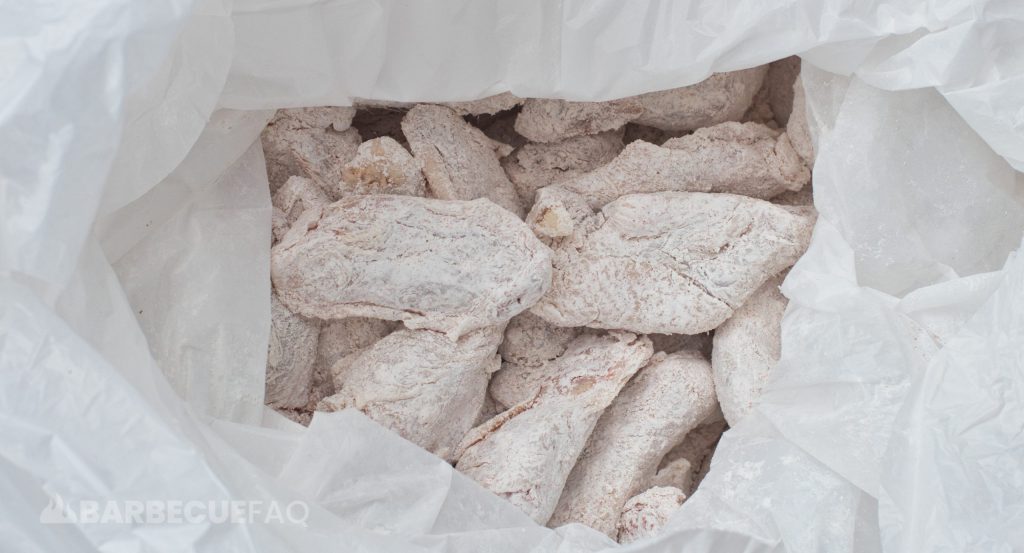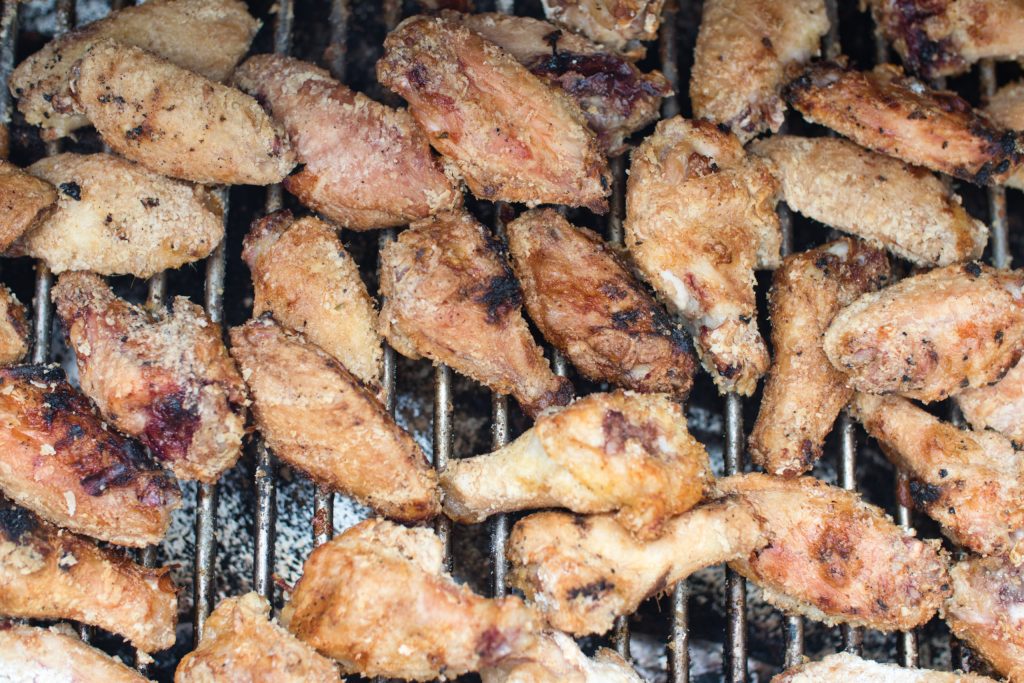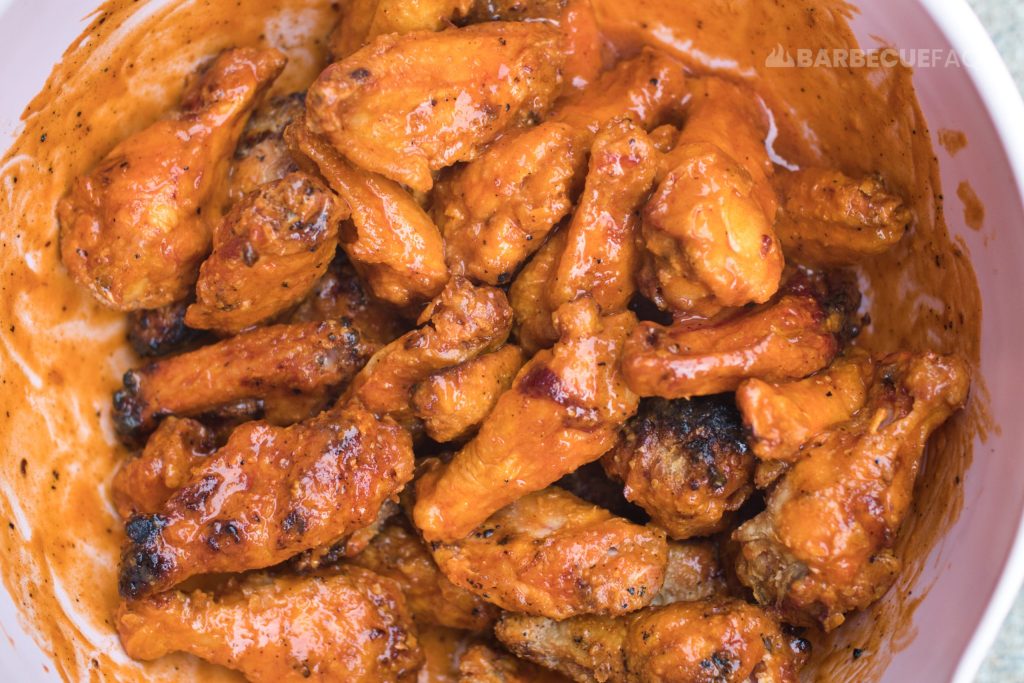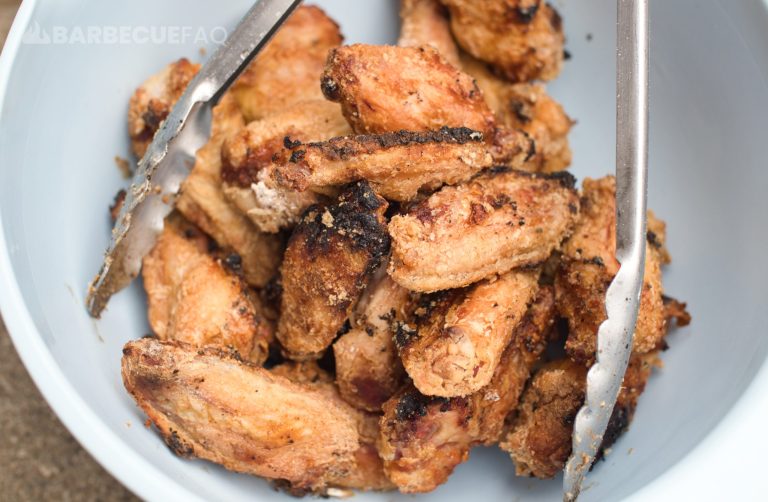Cut Wings into Wingettes and Drumettes
Take the wings out of the packaging and then separate the “parts” at the joints.
If you’re unsure of how to do this, here’s an article I wrote.
This recipe used 1 party pack of wings (12 wings, 24 parts)

Set Your Pellet Grill to 400F
Dredge the Wings in Cornstarch
For wings made specifically on the grill I prefer just cornstarch.
I’ve also directly compared baking powder, which I find tastes like sand and lacks the crunch.
To a bowl – or in my case, a cheap trash bag – add half a bottle of corn starch.
Then add all your wings to the bowl and completely coat the wings in the cornstarch – shake off any excess.

If you prefer to season your dredge, by all means, go for it!
Since I sauce heavily, I don’t bother.
Put Dredged Wings on the Grill
Put the dredged wings on the grill, ensuring none of them overlap.
After 20 minutes, flip the wings over – at this point the cornstarch should be set and not flaking off.

However, If when you go to flip you notice some of the cornstarch isn’t setup, wait another 5-10 minutes before flipping.
If some are more charred, move these to the center of the grill and others towards the hot zones.
After another 20 minutes, check the wings again. At this point they should be browned, and the skin should look crispy.
The entire cooking process takes 40-45 minutes.
The internal temperature you should aim for is 190F+.
Saucing the Wings
Get 1-2 cups of your favorite hot sauce or barbecue sauce and add it to a pot.
Set heat to low or medium-low.
Add a half stick of unsalted butter and use a wooden spoon to stir it into the sauce.
Incorporate this butter by melting it slowly into the sauce. Going too hot will cause the milk fat to separate.
Toss the Wings in the Sauce
Take your wings and add them to a large mixing bowl.

Take your sauce and pour the sauce over the wings and toss them in the sauce.
There you have it – crispy / crunch chicken wing perfection!
Pellet Grill Chicken Wings
Ingredients
- 1 Package Chicken Wings
- 8 oz Corn Starch
Sauce
- 1 Cup Hot Sauce
- 1 Cup Barbecue Sauce
- 1/2 Stick Butter
Instructions
- Take wings out of packaging and cut into wingettes and drumettes.
- Take half a bottle of corn starch (8 oz.) and add to a large mixing bowl.
- Put wings in bowl and dredge wings completely in corn starch. Shake off excess cornstarch.
- Set grill to 400F.
- Place dredged wings on grill.
- After 20 minutes check the wings. At this point they should start developing a crust and the cornstarch should be set. If it isn't, wait another 5-10 minutes. Once the cornstarch is set, flip them over and grill for another 20 minutes. If you notice some are burned/charred, move them to the center and move ones that are less "setup" to the hot zones.
- After 40-45 minutes the wings should be done. Remove from the grill and bring inside to sauce.
- Add 1 cup of either hot sauce or barbecue sauce to a medium-sauce pan. Set burner to low or medium-low.
- Add half a stick of unsalted butter and stir to incorporate the butter with the sauce. The sauce should have a velvety sheen when it's done.
- When butter is incorporated, add wings to a large mixing bowl and pour sauce over the wings. Toss the wings in the sauce and then enjoy!







2 comments
Wayne Bowlen
Very informative. Can wait to give it a go.
Dylan Clay
Happy to help Wayne!